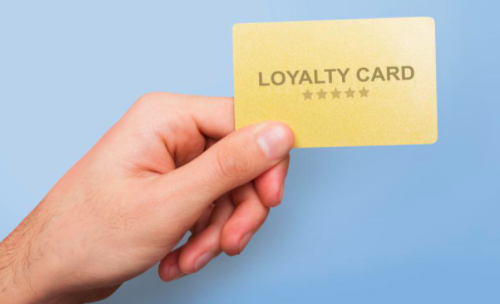How to Set Up a Simple Loyalty Program
October 14th 2021
One big lesson that has come out of the pandemic is the value of customer loyalty. Loyal customers not only spend more, but they also serve as business ambassadors, attracting new customers to their favorite small businesses.
An often-cited statistic for spending, which originated with Bain & Company in 1991, is that loyal customers spend 67% more than new ones. Not only that, but 56% of customers will spend more at a business they are loyal to, even when there are cheaper priced options elsewhere (that they likely know about), Yotpo reported. That percentage is up significantly from 2019, when only 34.5% were willing to spend more.
Loyal customers are also more profitable customers, according to a Harvard Business Review report that found increasing customer retention rates by 5% increases profits anywhere from 25% to 95%. That statistic is in line with the Pareto principle, which says that 20% of your customers are responsible for 80% of your profits.
In the simplest terms, holding on to customers you already have will help you build your customer base faster, increase sales, and increase profits faster than trying to attract new customers.
So how can you foster loyalty? Creating a program that rewards shoppers is one easy way. Bond Brand Loyalty found that 80% of buyers say loyalty programs both make them more likely to keep buying from the company or brand, and 68% buy more to maximize their loyalty benefits.
Loyalty programs can drive sales and, fortunately, starting one doesn’t have to be complicated.
Encouraging Customer Behavior
The first step in creating a loyalty program is deciding what you want to encourage customers to do. For example:
- Do you want them to come in more frequently?
- Do you want them to spend more on each visit?
- Do you want their help in attracting more customers?
- Do you want them to help promote certain products or brands?
Once you’re clear on what you want them to do, you can start to think about what you can offer that will entice them to take the action you want.
Choosing a Reward
There are probably hundreds of ways you could reward customers, but it’s important to think about what they want.
You could offer a gift certificate after customers spend a certain amount. Kohl’s does this with its Kohl’s Cash, which customers earn after spending in $50 increments. However, shoppers have to come back during the redemption period, which is typically a week or so after the cash is earned, rather than being able to spend it immediately. This boosts spending and return visits.
You could offer a discount on-the-spot for checking in on social media. Or a special prize for sharing a photo of a product purchase. This may be useful if your goal is to increase social media engagement or followers.
Many small service businesses offer cards cards that track each visit and reward the customer with a free product or a discount once the card has been filled in. That encourages repeat visits, without having to track dollar amounts spent.
You could offer free products for purchases made during a certain timeframe, like Clinique does with its bonuses. A pioneer of the free sample gift-with-purchase, cosmetic brand Clinique offers a special pack of several mini products when customers spend over a certain amount. Not only does this entice customers to spend the minimum amount to qualify, but they receive samples of other Clinique products to try that they may opt to buy next time.
Some loyalty programs offer regular benefits to regular customers, such as a percentage rebate on each purchase.
Others allow their loyalty program participants early access to sales or events, like American Express does when it offers cardholders early access to concerts and live event ticket sales.
Be sure to keep in mind that the reward needs to be something customers want in order to have any impact on your bottom line. Offering a 1% discount after spending $100, for example, is unlikely to make a difference (or the tiny amount may actually irritate customers).
Picking a Platform
When it comes to managing your rewards program, it’s best to keep it as simple as possible. Don’t invest in expensive tracking programs until you’re sure it will be worth it.
A physical punch card is a simple option that requires no tracking on your part. Design, print, and copy it yourself or use a service like Vistaprint to create something.
A software program tied to your cash register is an option for tracking amounts spent, or specific products purchased.
Sign up with an easy-to-use text-based loyalty program, such as Social Spiral, which has customers enter their cell phone number to participate. There’s no app to download and they can check their rewards via text.
Or if you want an app, try CandyBar, which is a digital loyalty program that helps businesses track customer purchases and reward them.
With both software programs, businesses can also communicate with loyalty program members, sending them special alerts about sales or limited time offers.
Since retail loyalty program members generate between 12% and 18% more revenue for retailers than customers who aren’t program members, according to Accenture, investing a little time and money to create your own could result in a big boost to your sales.



















